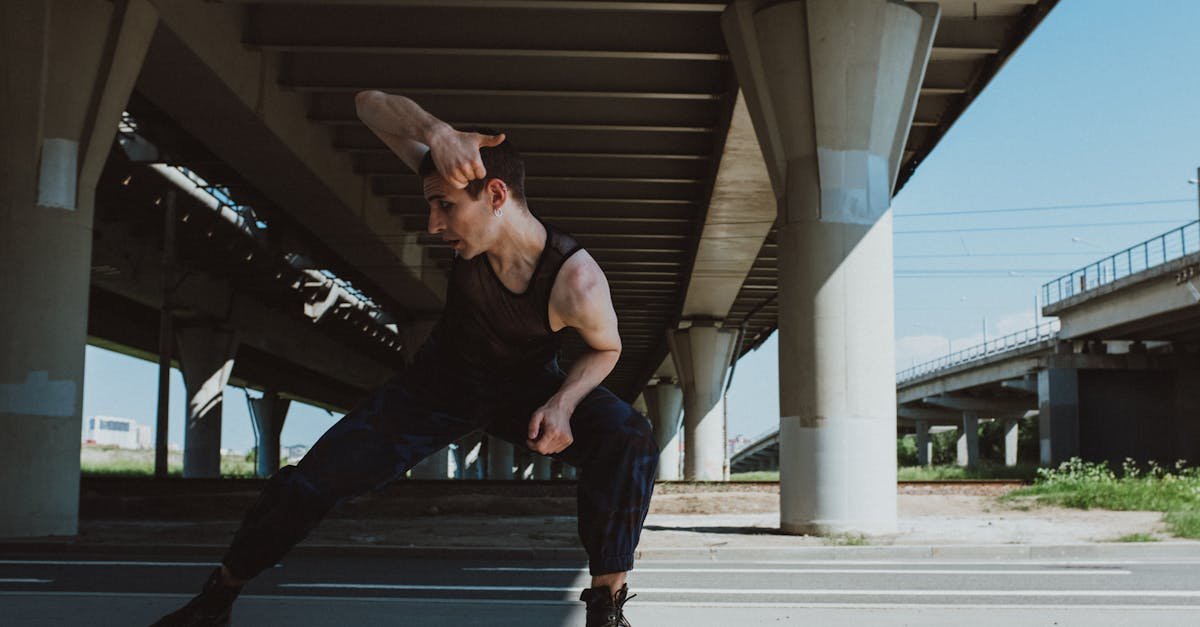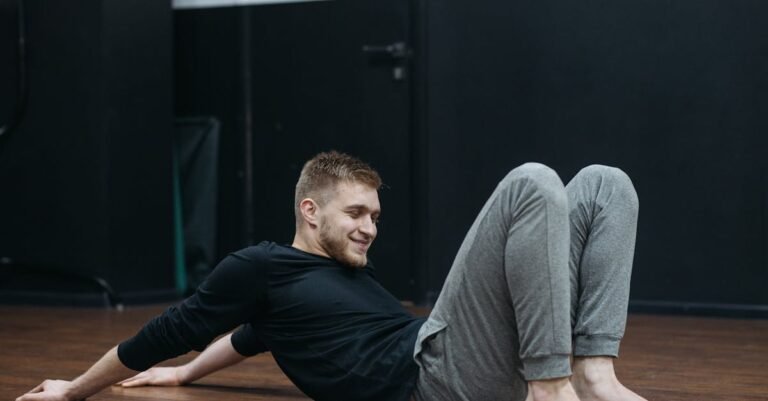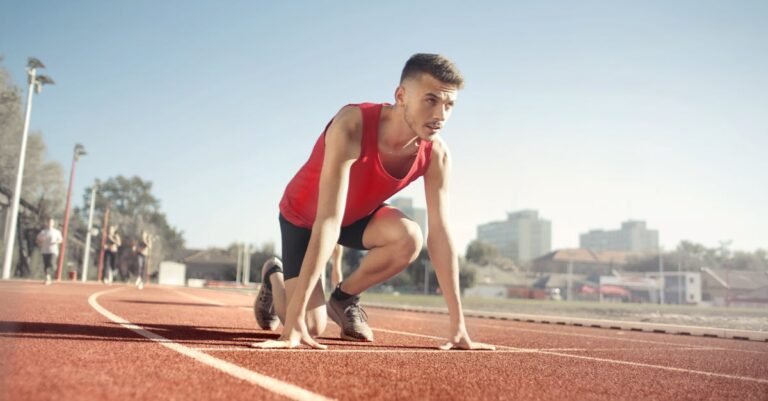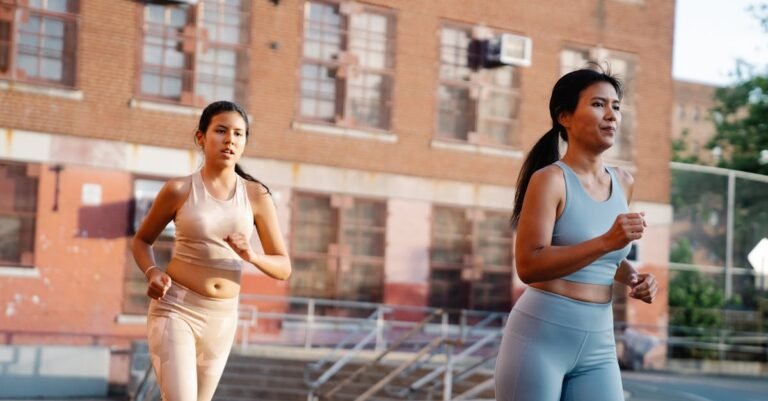Let’s be real. We all know we *should* move more. We hear it constantly – exercise is good for you, sitting is the new smoking, blah blah blah. But the thought of squeezing in a full-blown gym session or a long run after an exhausting day? Sometimes, it just feels impossible, right? I get it. Life is busy, demanding, and often leaves us feeling drained. But what if I told you that adding more movement to your day doesn’t have to involve Lycra, sweatbands, or complicated routines? What if it’s about sprinkling little bursts of activity throughout your *existing* day? Intrigued? Good! Because we’re diving into super simple, totally achievable ways to get your body moving more without drastically overhauling your schedule. Think less ‘marathon training’ and more ‘movement snacks’.
Why Bother Moving More? (Beyond the Gym)
Okay, before we jump into the “how,” let’s quickly touch on the “why.” Why is incorporating these little movements so crucial, even if you *do* manage to hit the gym occasionally? It’s about counteracting the negative effects of being sedentary for long stretches.
The Sneaky Dangers of Sitting Still
Think about your typical day. Commute sitting down? Desk job sitting down? Relaxing after work… sitting down? Even if you exercise for an hour, those other 23 hours matter! Prolonged sitting is like putting your body on pause. Your metabolism slows down, circulation decreases, muscles tighten up (hello, back pain!), and your risk for various health issues creeps up. It’s not just about burning calories; it’s about keeping your body’s systems humming along nicely. Spending hours glued to a chair is like letting a car engine idle for too long – things just don’t run as efficiently, and eventually, problems can arise. Our bodies were designed to move, not to be stationary statues for hours on end!
What is NEAT and Why Does It Matter?
Ever heard of NEAT? It stands for Non-Exercise Activity Thermogenesis. Fancy term, simple concept: it’s the energy you burn doing everything *except* structured exercise, sleeping, or eating. Think fidgeting, walking to the water cooler, tapping your foot, doing chores, pacing while on the phone. It might sound insignificant, but NEAT can actually account for a substantial portion of your daily calorie expenditure! By consciously adding more of these small movements, you’re boosting your NEAT without even thinking of it as “working out.” It’s like finding spare change in your pockets throughout the day – it all adds up! Increasing your NEAT is a powerful, sustainable way to improve your metabolic health and energy levels.
Movement Hacks for Your Workday
The workday is often the biggest culprit when it comes to prolonged sitting. But it also presents numerous opportunities to sneak in some movement. Let’s break down how you can transform your 9-to-5 (or whatever your hours may be) from sedentary to subtly active.
Revamp Your Commute
Your journey to and from work is prime time for adding steps and activity. Don’t just see it as wasted time; see it as a movement opportunity!
Park Further Away (The Old Classic!)
Yes, it’s advice as old as time, but it works! Resist the urge to circle the parking lot like a vulture searching for the closest spot. Intentionally park further away – at the back of the lot, down the street, a block or two away. Those extra few minutes of walking add up surprisingly quickly over the week. Think of it as a built-in mini-walk before and after your workday. It’s a simple switch with a guaranteed payoff in steps.
Take the Stairs, Obviously
Another classic for a reason! Unless you’re carrying something heavy or heading to the 30th floor, ditch the elevator or escalator and take the stairs. Even just one or two flights makes a difference. It gets your heart rate up, works your leg muscles, and gives you a quick burst of energy. If you work on a higher floor, maybe commit to walking the first few flights and then catching the lift? Every little bit helps break up the stillness.
Bus or Train Stop Shuffle
Using public transport? Brilliant! Can you get off one stop earlier and walk the rest of the way? Or, if you’re waiting for your bus or train, instead of just standing or sitting, pace up and down the platform or sidewalk. Use that waiting time actively. It might feel a little silly at first, but who cares? You’re investing in your health, one shuffle at a time.
Taming the Desk Job Dragon
Okay, you’ve made it to your desk. Now the real battle against stillness begins. But fear not, we have strategies to slay the sedentary dragon!
Stand Up, Stretch Out! (Simple Desk Moves)
Set a reminder (more on that later!) to stand up every 30-60 minutes. Just the act of standing engages different muscles and gets blood flowing. While you’re up, do some simple stretches: reach for the ceiling, touch your toes (or shins!), do some gentle neck rolls, twist your torso side to side. You don’t need a full yoga routine; just a few moments to counteract the hunch. Consider calf raises while waiting for the kettle to boil or shoulder rolls while reading an email. These micro-movements prevent stiffness and boost alertness.
The Walking Meeting Revolution
Does every meeting *really* need to happen sitting around a table? Suggest a walking meeting for one-on-ones or small group discussions. Grab your colleague(s) and take your conversation outside or around the office corridors. You’ll be surprised how the change of scenery and gentle movement can spark creativity and make the discussion more dynamic. Plus, you’re both getting steps in! It’s a win-win for productivity and health.
Active Phone Calls: Pace and Talk
If you spend a lot of time on the phone, use it as a cue to move. Instead of sitting glued to your chair, stand up and pace around your office or workspace while you talk. If you use a headset, you have even more freedom to roam. It breaks up sitting time, helps you think on your feet (literally!), and burns a few extra calories. Just be mindful of your surroundings if you’re in an open-plan office!
Invest in Movement-Friendly Furniture?
This might involve a small investment, but consider options like a standing desk converter, an under-desk elliptical, or even a stability ball chair (use it intermittently). A standing desk allows you to easily switch between sitting and standing throughout the day. Even just standing for part of your workday significantly reduces total sitting time. An under-desk pedal device lets you cycle while you type. These aren’t essential, but they can make incorporating movement even easier if your budget and workplace allow.
Lunch Break Liftoff: Escape the Chair
Your lunch break is sacred! Don’t just eat at your desk. Use this time to consciously move. Go for a brisk walk outside, even if it’s just for 10-15 minutes. Explore your surroundings, get some fresh air and vitamin D. If the weather’s bad, walk the office corridors, climb some stairs, or find an empty space for some quick stretches. Anything is better than swapping your desk chair for the breakroom chair. This midday movement can re-energize you for the afternoon ahead.
Weaving Movement into Home Life
The opportunities for movement don’t stop when you clock out. Your home environment is full of potential for activity – you just need to look for it.
Chores: Your Secret Workout Weapon
Ugh, chores. Nobody *loves* them, but you can reframe them as movement opportunities! Put on some upbeat music and attack your cleaning with gusto. Vacuuming, mopping, scrubbing, gardening, even folding laundry (especially if you stand and move around while doing it) all count as physical activity. The more vigorously you do them, the more benefit you get. Think of it as multitasking – cleaning your house and getting your body moving simultaneously. Can you make it a game? See how quickly you can vacuum the living room or how many weeds you can pull in 10 minutes?
TV Time Transformation
Collapsing on the sofa after a long day feels good, but it doesn’t have to be completely passive. You can easily inject movement into your screen time.
Commercial Break Challenges
Watching live TV or streaming with ads? Use those breaks! Instead of fast-forwarding or grabbing a snack, challenge yourself to do something active until the show comes back on. Think jumping jacks, push-ups (against the wall or floor), squats, lunges, jogging in place, or holding a plank. It’s interval training, home edition! Just a few minutes every break adds up significantly over an evening.
Fidget While You Watch (Yes, Fidgeting Counts!)
Remember NEAT? This is where fidgeting shines. Don’t just sit like a lump. Tap your feet, stretch your legs out, do ankle circles, gently rock, or use a small resistance band for leg exercises while you watch. If you have space, maybe do some gentle floor stretches or foam rolling. It keeps the blood flowing and prevents you from sinking into total stillness for hours.
Cooking and Cleaning Calisthenics
Waiting for water to boil? Do some calf raises or counter push-ups. Chopping vegetables? Stand tall and engage your core. Wiping down counters? Put some extra energy into it. Unloading the dishwasher? Do squats as you put away the lower items. Walking back and forth putting groceries away? Take purposeful strides. These might seem tiny, but they keep you off your feet and add little bits of activity into routine tasks.
Playtime Power-Up (Kids & Pets)
If you have children or pets, they are natural movement motivators! Engage actively in their playtime. Don’t just watch your kids at the park; run around with them, climb the equipment, play tag. Throw the ball for your dog *and* run with them to fetch it. Play tug-of-war. Chase your cat with a feather wand. Their energy is infectious, and joining in is great for bonding and boosting your activity levels.
Making Movement Mindful and Fun
Consistency is easier when movement feels less like a chore and more like a natural, even enjoyable, part of your day. Here’s how to cultivate that mindset.
Set Reminders (Your Digital Nudge)
It’s easy to get absorbed in work or relaxation and forget to move. Use technology to your advantage! Set alarms on your phone, computer, or smartwatch to go off every 30 or 60 minutes as a simple reminder to stand up, stretch, or take a short walk. There are even apps specifically designed to remind you to take movement breaks. Think of it as a friendly digital tap on the shoulder saying, “Hey, time to un-glue yourself from that chair!”
Find Your Movement Joy: It Doesn’t Have to Be “Exercise”
The key to sticking with anything is finding enjoyment in it. What kind of movement do *you* actually like? Maybe it’s dancing around the kitchen while cooking, gardening, taking photos on a walk, window shopping at the mall, playing a casual sport like frisbee, or simply strolling through a park. Don’t force yourself into activities you hate just because they count as “exercise.” Focus on incorporating activities that feel good and bring you joy. When movement is fun, it stops feeling like an obligation.
Small Steps, Big Impact: Consistency is Key
Remember, the goal here isn’t to become a super athlete overnight. It’s about making small, sustainable changes that add up over time. Don’t feel pressured to do everything at once. Pick one or two ideas from this list that resonate with you and focus on incorporating them consistently into your routine. Maybe this week, you commit to taking the stairs every day. Next week, you add a 10-minute walk during your lunch break. It’s like building a snowball – start small, keep rolling, and eventually, you’ll create significant momentum. Celebrate the small wins! Every time you choose movement over sitting still, you’re making a positive investment in your health and well-being. Consistency, even with tiny actions, is far more powerful than sporadic bursts of intense effort.
Conclusion
So there you have it – a whole arsenal of easy, practical ways to weave more movement into your daily life without needing extra time, fancy equipment, or a gym membership. It’s about shifting your mindset from thinking of activity as solely “exercise time” to seeing opportunities for movement everywhere – during your commute, at your desk, while doing chores, and even while relaxing. By embracing these “movement snacks” and boosting your NEAT, you combat the negative effects of prolonged sitting and significantly improve your overall health and energy levels. Start small, be consistent, find what you enjoy, and remember that every little step, stretch, and wiggle counts. Ready to get moving?
Frequently Asked Questions (FAQs)
1. Does fidgeting really make a difference?
Absolutely! While it won’t replace structured exercise, fidgeting (tapping feet, shifting posture, small movements) contributes to your Non-Exercise Activity Thermogenesis (NEAT). Over the course of a day, this can add up to a surprising number of calories burned and helps counteract some negative effects of being completely still.
2. How often should I get up from my desk if I have a sitting job?
Aim to stand up and move around for at least a few minutes every 30 to 60 minutes. Even a short break to stretch, walk to get water, or do a few calf raises can help break up prolonged sitting and improve circulation and alertness.
3. I hate traditional exercise. Can these small movements actually improve my health?
Yes! While vigorous exercise has unique benefits, increasing your overall daily movement and reducing sedentary time is incredibly important for metabolic health, circulation, mood, and reducing risks associated with inactivity. Focusing on NEAT and integrating movement throughout your day provides significant health advantages, independent of formal workouts.
4. Is a standing desk enough, or do I still need to move?
A standing desk is a great tool to reduce sitting time, but just standing still isn’t ideal either. The benefit comes from *alternating* between sitting and standing and incorporating movement while standing (shifting weight, stretching, pacing slightly). Don’t just trade static sitting for static standing – keep moving!
5. How can I stay motivated to keep adding movement?
Focus on consistency over intensity. Start with just one or two changes that feel easy. Use reminders, find activities you genuinely enjoy (like dancing or walking with a friend), track your progress (like daily steps) if that motivates you, and remind yourself of the benefits – feeling more energetic, less stiff, and healthier overall.










